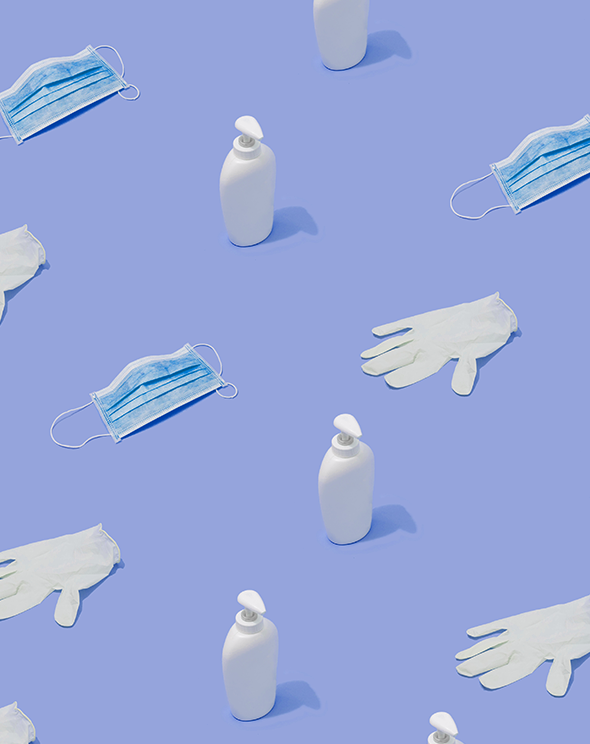This article originally appeared in Healthcare Business Today.
Vaccines are getting approved, and people are beginning to see a light at the end of the COVID-19 tunnel. As the new year approaches and we begin to think about life post-pandemic, brands that can demonstrate their unique commitment to care—what that means for patients, communities and each other—will be well-positioned to stand apart as leaders going forward.
Here are five key trends to consider in evaluating how you’re delivering on your brand in 2021.
Information overload
Information changes at such a fast pace that misinformation continues to be widespread. Adding to the confusion is the difference in reopening or relocking down across cities and nations. However, throughout this time, the healthcare industry has provided a much-needed source of truth and authority. Pharmaceutical companies, in particular, may have a bigger voice to share insights about a COVID vaccine.
Today, as both internal and external audiences look to you for guidance, it’s important to consider your brand voice. In other words, not just what you say but how you say it. My colleagues have recently shared some of their expertise on speaking on-voice during a crisis and speaking with compassion. In healthcare, there’s a particular opportunity to use your platform not only to provide clarity but also to reinforce your unique point of view and commitment to people. In the long-term, key audiences such as potential candidates or investors may also look to your COVID-era communications for a better understanding of your brand.
Ask yourself: what makes your brand voice distinct, and how is it shining through?
- Take a look at a variety of recent communications – across audiences and channels. Check to see if they sound consistent.
- Note the consistencies, but also where they’re different in tone or the theme. Some variety is appropriate depending on the audience or topic, like COVID, but be mindful that it still feels on-brand.
Collaboration is innovative
The pandemic brought with it an unprecedented set of limitations. Social distancing keeps people apart, which in turn also limits access to certain services and supplies. However, recessions and crises often set the stage for new innovation as well. That is certainly true today as COVID-19 inspires creativity and connection rooted in resourcefulness.
On an individual level, researchers are using digital channels more than ever before to share real-time information and communicate. Companies like Cygnal Therapeutics, which can no longer rely on in-person collaboration, are learning new ways to collaborate and leverage technology amidst remote work and shift-based schedules. While there’s no replacement for in-person collaboration, the Cygnal team has “learned to work more intimately to compensate” and use tools like Zoom to work in productive teams.
There’s an unprecedented level of collaboration at an organizational level as well. GlaxoSmithKline and Sanofi are just one example of pharmaceutical brands that partnered to discover and produce a vaccine as quickly as possible. It is notable that these companies are usually in competition, but through their Joint Collaboration Task Force, each brand shared their expertise and learnings openly with each other. Amidst COVID, both are putting aside a business rivalry to deliver on a shared brand promise: serving a global population with trusted healthcare leadership.
Ask yourself: how are you using your platforms to their full advantage? What existing tools or services could be expanded upon or made accessible to others? What partners might share your brand purpose?
- Internally, assess which channels or tools are helping your teams deliver. Encourage people to fully utilize them by reducing potential hurdles and streamlining the experience.
- Externally, consider how you’re working with key audiences during COVID. There might be opportunities for new partnerships or information sharing.
Embracing mental health
Understandably, much of the discussion around COVID-19 has centered on physical symptoms and treatments; however, mental well-being also plays an important role in aiding recovery and understanding long-term effects. The pandemic has put a new emphasis on the importance of mental health, as well as highlighted some of the gaps in support and resources. For those in healthcare, feelings of stress and burnout are particularly acute. According to a recent MetLife survey, 72% of healthcare workers feel higher stress due to the pandemic.
Accelerated by COVID, many solutions have emerged to support mental well-being during this difficult time. On the patient-side, Huma, a digital health company, has partnered with the University of Cambridge to track both physical and mental health through an integrated system of data, telehealth and wearables. By including a holistic view of well-being, it is their hope to better understand how the virus progresses and what kind of guidance can have the most positive impact.
Employers have also looked for ways to support their teams during this time, as stress (especially prolonged stress) can have a negative impact on productivity and engagement. This is particularly important in health because the same MetLife study reports that while 79% believe their employer has a responsibility to support their well-being, only 39% believe their employer prioritizes it. While many companies quickly provided well-being services, some like Medtronic were able to tap into existing services through the Medtronic Employee Assistance Program (MEAP). This allowed employees to easily and quickly access the support they needed and allowed Medtronic to continue delivering on their mission to “recognize the personal worth of all employees.”
Ask yourself: how do you integrate mental and emotional well-being into your workplaces or solutions?
- Ask your employees what most contributes to their sense of well-being and security. Understand what could have the biggest impact on your team’s unique culture.
- Think empathetically about your end customer and the role your solution plays in their life. Be aware of their mindset across every touchpoint with your brand, and how that might be evolving amidst COVID.
Disproportionate impact
Rather than being “the great equalizer,” data has shown that people of color are disproportionally, negatively affected. In terms of the virus, early analysis from NPR of COVID-19 demographic data collected by the COVID Racial Tracker shows that African-American deaths are nearly two-times greater than their share of the population. Meanwhile, essential workers—janitorial, homecare services and grocery—are more likely to be women and people of color.
The underlying societal reasons for this reality pre-date COVID-19, but today’s reality reinforces the need to purposefully and intentionally engage with vulnerable communities. Many research studies have shown that response rates can vary by ethnicity, but according to Scientific America clinical study populations “skew heavily white—in some cases, 80-90 percent.” In other words, testing potential COVID-19 vaccines with an ethnically diverse panel can help determine if it will be effective in the general population. However, recruiting more Black, Indigenous and People of Color (BIPOC) participants isn’t as easy as it may seem, because of past experiments—such as Henrietta Lacks’ story—that have contributed to a stronger distrust of the medical community among Black and Latinx Americans.
Through “Advancing Inclusive Research,” Genentech has focused on removing inequality in clinical studies. When the pandemic began, their Medical Affairs team partnered with hospitals that treat “underserved and minority patients” to enroll patients in a study to understand a possible treatment for COVID pneumonia. The results of this study will help healthcare practitioners understand efficacy with a more representative sample. Work like this demonstrates Genentech’s commitment to developing personalized, effective medicine by better understanding the diversity of those they serve.
Ask yourself: how does your brand actively engage with and include underserved communities?
- Include diverse and representative decision makers. If this isn’t immediately possible inside your organization, seek partnerships and guidance from others.
- Establish clear goals to create or maintain equality in your organization. Be transparent about your progress.
Different forms of leadership
Healthcare brands position themselves as leaders in different ways, and that is no different amidst COVID-19 responses. For example, the global collaboration between GlaxoSmithKline and Sanofi shows a commitment to global scientific leadership. Meanwhile, Genentech’s ‘call to the industry’ to address disparities in COVID-19 research and in all clinical research moving forward is an example of community-minded leadership. From an employer perspective, Amgen’s “actively caring” culture and leadership created an environment where teams are empowered to keep themselves safe without compromising operations. And potential disrupter CLEAR, known for airport security, may emerge as a leader in medical data security by integrating biometrics in their app and location-based hardware.
While no one can predict how the world will look post-COVID, how you act today will have a long-term impact on how your brand is perceived. The start of 2021 is a perfect time to define what leadership means to you, your vision for the future, and what you are doing to help shape it.
Ask yourself: in five years, what type of industry leader do you want to be known as?
- Imagine what the world may look like in five years, which may include new or different competitors. Consider ways to “own” your leadership in a way that is distinctive and long-lasting.
- Align your current actions to support long-term leadership goals. Help your people become champions and advocates for the work you do.
Think about your answers to the questions above. There will be authentic, positive and enduring characteristics to carry forward. You may have found new opportunities to explore and add value, expanding upon what your brand experience delivers. And simply, there may be some activities to stop because they are not aligned with where you want to go. While this is a time of transition for healthcare, it’s just one of many in an evolving healthcare landscape. Take the time to reflect and plan for purposeful action moving forward.


